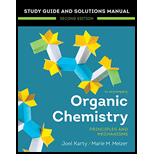
Concept explainers
(a)
Interpretation:
The given molecule is same or different enantiomer of the shown original molecule is to be identified.
Concept introduction:
Isomers are molecules having same connectivity. Enantiomers are nonsuperimposable mirror images. If the molecules can be interconverted by one or more single bond rotation, then they are said to be the same enantiomer or identical molecules. If the molecules are not able to interconvert, then they are enantiomers of each other.
Answer to Problem 5.37P
The given molecule is not same enantiomer as the original one.
Explanation of Solution
The given original enantiomer is:

The molecule which is to be compared is:

The given molecule is the non superimposable mirror image of THE original molecule.

These molecules cannot be interconverted by single bond rotation. Hence, the given molecule is not same enantiomer as the original one.
The molecule is not a same enantiomer as the original molecule is determined on the basis of capability of interconversion by single bond rotation.
(b)
Interpretation:
The given molecule is same or different enantiomer of the shown original molecule is to be identified.
Concept introduction:
Isomers are the molecules having same connectivity. Enantiomers are nonsuperimposable mirror images. If the molecules can be interconverted by one or more single bond rotation, then they are said to be same enantiomer or identical molecules. If the molecules are not able to interconvert, then they are enantiomers of each other.
Answer to Problem 5.37P
The given molecule is a same enantiomer as the original one.
Explanation of Solution
The given original enantiomer is:

The molecule which is to be compared is:

The molecule can be converted to original molecule.

Hence, the given molecule is a same enantiomer as the original one.
The molecule is a same enantiomer as the original molecule is determined on the basis of capability of interconversion by single bond rotation.
(c)
Interpretation:
The given molecule is same or different enantiomer of the shown original molecule is to be identified.
Concept introduction:
Isomers are the molecules having same connectivity. Enantiomers are nonsuperimposable mirror images. If the molecules can be interconverted by one or more single bond rotation, then they are said to be the same enantiomer or identical molecules. If the molecules are not able to interconvert, then they are enantiomers of each other.
Answer to Problem 5.37P
The given molecule is not a same enantiomer as the original one.
Explanation of Solution
The given original enantiomer is:

The molecule which is to be compared is:

The molecule cannot be converted to the original molecule by single bond rotation.
Hence, the given molecule is not same enantiomer as the original one.
The molecule is not a same enantiomer as original molecule is determined on the basis of capability of interconversion by single bond rotation.
(d)
Interpretation:
The given molecule is same or different enantiomer of the shown original molecule is to be identified.
Concept introduction:
Isomers are molecules having same connectivity. Enantiomers are nonsuperimposable mirror images. If the molecules can be interconverted by one or more single bond rotation, then they are said to be the same enantiomer or identical molecules. If the molecules are not able to interconvert, then they are enantiomers of each other.
Answer to Problem 5.37P
The given molecule is same enantiomer as the original one.
Explanation of Solution
The given original enantiomer is:

The molecule which is to be compared is:
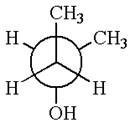
The given Newman projection can be converted to zigzag structure as shown below:

The molecule can be converted to the original molecule.

Hence, the given molecule is same enantiomer as the original one.
The molecule is a same enantiomer as original molecule is determined by converting Newman projection to zigzag structure.
(e)
Interpretation:
The given molecule is same or different enantiomer of the shown original molecule is to be identified.
Concept introduction:
Isomers are molecules having same connectivity. Enantiomers are nonsuperimposable mirror images. If the molecules can be interconverted by one or more single bond rotation, then they are said to be the same enantiomer or identical molecules. If the molecules are not able to interconvert, then they are enantiomers of each other.
Answer to Problem 5.37P
The given molecule is not a same enantiomer as the original one.
Explanation of Solution
The given original enantiomer is:

The molecule which is to be compared is:
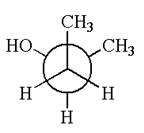
The given Newman projection can be converted to zigzag structure as shown below:

The given molecule is a nonsuperimposable mirror image of the original molecule.

These molecules cannot be interconverted by single bond rotation. Hence, the given molecule is not same enantiomer as the original one.
The molecule is a not the same enantiomer as the original molecule is determined by converting Newman projection to zigzag structure.
(f)
Interpretation:
The given molecule is same or different enantiomer of the shown original molecule it is to be identified.
Concept introduction:
Isomers are molecules having same connectivity. Enantiomers are nonsuperimposable mirror images. If the molecules can be interconverted by one or more single bond rotation, then they are said to be same enantiomer or identical molecules. If the molecules are not able to interconvert, then they are enantiomers of each other. In Fischer projection, the horizontal bonds point towards the observer and are denoted as wedge bond in the zigzag structure.
Answer to Problem 5.37P
The given molecule is a same enantiomer as the original one.
Explanation of Solution
The given original enantiomer is:

The molecule which is to be compared is:
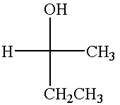
The given Fischer projection can be converted to zigzag structure as shown below:
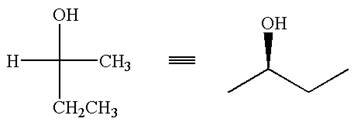
Hence, the given molecule is a same enantiomer as the original one.
The molecule is not a same enantiomer as the original molecule is determined by converting Fischer projection to zigzag structure.
(e)
Interpretation:
The given molecule is same or different enantiomer of the shown original molecule is to be identified.
Concept introduction:
Isomers are molecules having same connectivity. Enantiomers are nonsuperimposable mirror images. If the molecules can be interconverted by one or more single bond rotation, then they are said to be the same enantiomer or identical molecules. If the molecules are not able to interconvert, then they are enantiomers of each other. In Fischer projection, the horizontal bonds point toward the observer and are denoted as wedge bond in the zigzag structure.
Answer to Problem 5.37P
The given molecule is not a same enantiomer as the original one.
Explanation of Solution
The given original enantiomer is:

The molecule which is to be compared is:
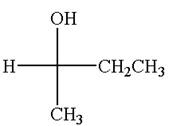
The given Fischer projection can be converted to zigzag structure as shown below:
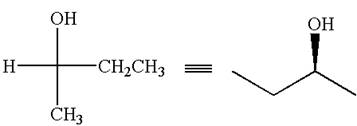
The given molecule is a nonsuperimposable mirror image of the original molecule.

These molecules cannot be interconverted by single bond rotation. Hence, the given molecule is not same enantiomer as the original one.
The molecule is not a same enantiomer as the original molecule is determined by converting Fischer projection to zigzag structure.
(g)
Interpretation:
The given molecule is same or different enantiomer of the shown original molecule it is to be identified.
Concept introduction:
Isomers are the molecules having same connectivity. Enantiomers are nonsuperimposable mirror images. If the molecules can be interconverted by one or more single bond rotation, then they are said to be the same enantiomer or identical molecules. If the molecules are not able to interconvert, then they are enantiomers of each other.
Answer to Problem 5.37P
The given molecule is not a same enantiomer as the original one.
Explanation of Solution
The given original enantiomer is:

The molecule which is to be compared is:
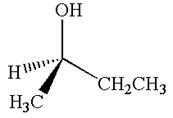
This molecule can be converted to original molecule by single bond rotation.


Hence, the given molecule is same enantiomer as the original one.
The molecule is a same enantiomer as the original molecule is determined on the basis of capability of interconversion by single bond rotation.
Want to see more full solutions like this?
Chapter 5 Solutions
Organic Chemistry: Principles And Mechanisms: Study Guide/solutions Manual (second)
- Draw a tetramer of this alternating copolymer.arrow_forwardH I T H HH H -H C. H- Identify and select all structures below that represent a constitutional isomer(s) of the compound shown above. H- H CIH H H H HHHH H H 0 ·H H– 冊 CH CHI HH C- H- H H- H H A. H H C H H- -H HH H B. H- -H D. H H H H • H -H E. -H H H HICH T HHH F. H-arrow_forwardPolylactic acid (shown below) is a biodegradable polymer used for food packaging. Identify the monomer(s) used in the production of this polymer using a condensation process.arrow_forward
- Draw the product of the reaction shown below. Ignore small byproducts that would evaporate pleasearrow_forwardPoly(ethylene adipate) is a biodegradable polyester (shown below). Identify the type of polymerization process used in the production of this polymer.arrow_forwardPolymers may be composed of thousands of monomers. draw two repeat units(dimer) of the polymer formed in this reaction. assume there are hydrogen atoms on the two ends of the dimer. ignore inorganic byproducts pleasearrow_forward
- Draw the product of the reaction shown below. Use a dash or wedge bond to indicate stereochemistry of substituents on asymmetric centers, Ignore inorganic byproductsarrow_forwardDraw the product of this reaction please. Ignore inorganic byproductsarrow_forwardOne of the pi molecular orbitals of 1,3-butadiene (CH2=CHCH=CH2) is shown below. Please identify the number of nodal planes perpendicular to the bonding axisarrow_forward
- Draw the monomers required to synthesize this condensation polymer please.arrow_forwardProvide the correct systematic name for the compound shown here. Please take into account the keyboard options belowarrow_forwardcurved arrows are used to illustrate the flow of electrons. using the provided starting and product structures, draw the curved electron-pushing arrows for the following reaction or mechanistic step(s)arrow_forward
 ChemistryChemistryISBN:9781305957404Author:Steven S. Zumdahl, Susan A. Zumdahl, Donald J. DeCostePublisher:Cengage Learning
ChemistryChemistryISBN:9781305957404Author:Steven S. Zumdahl, Susan A. Zumdahl, Donald J. DeCostePublisher:Cengage Learning ChemistryChemistryISBN:9781259911156Author:Raymond Chang Dr., Jason Overby ProfessorPublisher:McGraw-Hill Education
ChemistryChemistryISBN:9781259911156Author:Raymond Chang Dr., Jason Overby ProfessorPublisher:McGraw-Hill Education Principles of Instrumental AnalysisChemistryISBN:9781305577213Author:Douglas A. Skoog, F. James Holler, Stanley R. CrouchPublisher:Cengage Learning
Principles of Instrumental AnalysisChemistryISBN:9781305577213Author:Douglas A. Skoog, F. James Holler, Stanley R. CrouchPublisher:Cengage Learning Organic ChemistryChemistryISBN:9780078021558Author:Janice Gorzynski Smith Dr.Publisher:McGraw-Hill Education
Organic ChemistryChemistryISBN:9780078021558Author:Janice Gorzynski Smith Dr.Publisher:McGraw-Hill Education Chemistry: Principles and ReactionsChemistryISBN:9781305079373Author:William L. Masterton, Cecile N. HurleyPublisher:Cengage Learning
Chemistry: Principles and ReactionsChemistryISBN:9781305079373Author:William L. Masterton, Cecile N. HurleyPublisher:Cengage Learning Elementary Principles of Chemical Processes, Bind...ChemistryISBN:9781118431221Author:Richard M. Felder, Ronald W. Rousseau, Lisa G. BullardPublisher:WILEY
Elementary Principles of Chemical Processes, Bind...ChemistryISBN:9781118431221Author:Richard M. Felder, Ronald W. Rousseau, Lisa G. BullardPublisher:WILEY





